6 full-size alternatives to muscle cars
Plenty of cars from the ’60s and ’70s offer beautiful designs and gutsy power plants but don’t neatly fall into the muscle car category. In the past, we’ve offered up some more affordable, midsize alternatives to the typical muscle car. This time, let’s delve into some of my favorite full-size cars from the era. Sure, they were bigger and heavier than their drag strip–hero counterparts, but they brought some big V-8 power to bear.
These cars were often the premier models in their showrooms. They featured a plusher interior and often prioritized a smoother ride. While their rowdier muscle car brethren featured some of the same power plants in smaller, lighter packages and dominated the drag strip, these cars were built for the highway and are still perfectly suited for weekend cruising or road-trip duty.
Whether totally stock, lightly resto-modded, or fully customized, here are six full-size hardtops that are overdue for some adulation. Translation: When you can find them, these fantastic cars are often a bargain.
1970 Ford Thunderbird
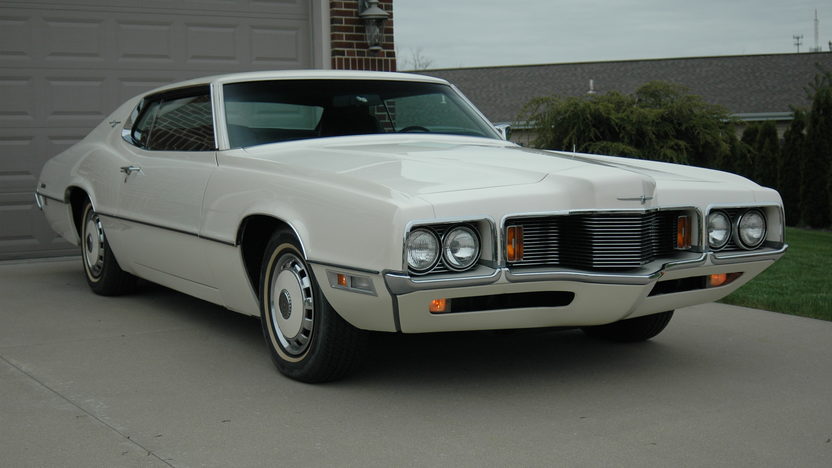
How have these cars flown under the radar for so long? From the front three-quarter view they look long and low, with a jutting grille that resembles the mid-size Mercury Cyclone. However, its rear three-quarter view is among the best of any car built during the decade. The roof is so low it looks chopped, and the taillights frame the car perfectly.
Barrett-Jackson sold a customized 1970 Thunderbird at its 2019 Las Vegas sale—the purple car you see above—that had the front of a 1967 Thunderbird seamlessly grafted on. The hidden headlights were a fantastic addition, but even in stock form they look amazing. The custom version, absolutely regal in metallic purple, went for $55,000. A well-preserved model will cost much less.
Power came from a 360-hp 429-cubic-inch V-8, and while a Boss 429 would be killer, the Thunderbird’s engine bay should be a bit more accommodating of the massive engine than the Mustang’s.
1969–70 Buick Wildcat
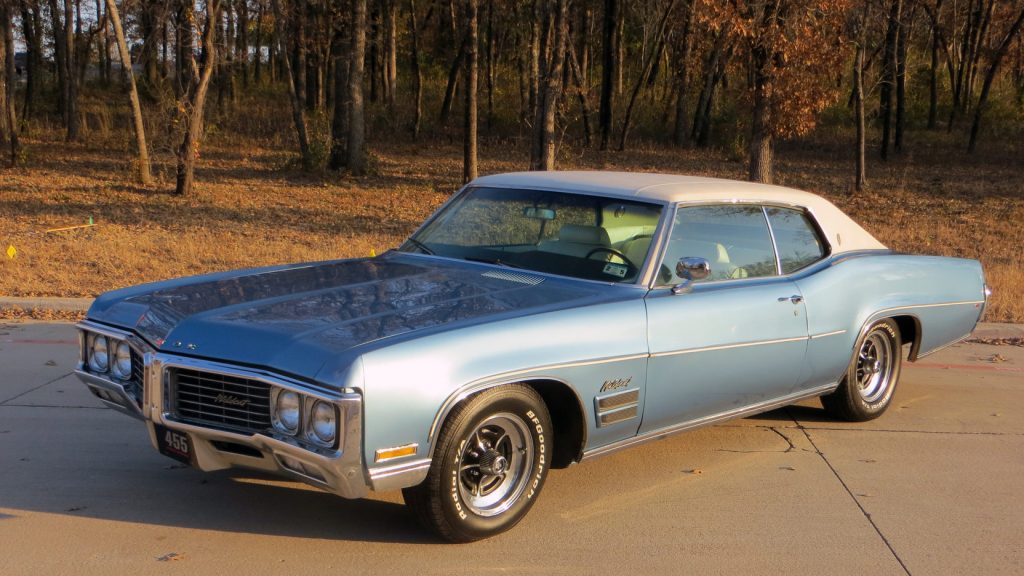
We’ve sung the praises of the Buick Wildcat before, but here’s the chorus one more time: The Wildcat offers up a lot of the performance of the Impala SS, without the premium price that comes with the collectibility of the “SS” badge. It brings fantastic looks, solid big-block power plants, and smooth cruising. The only problem is that they don’t come up for sale as often as their more popular B-body platform mates.
That said, because Wildcats have the benefit of riding on GM’s long-lived B-body chassis, OEM brake and suspension upgrades are simple and affordable. Spindles and calipers for big disc brakes can be found on junkyard ’90s Caprice cop cars or Impalas. Rear axle brake upgrades are just as simple.
The 1969 models with Buick’s 360-hp, 430-cubic-inch V-8, or 1970 models with the 370-hp 455, are still affordable and look every bit as good as their Chevrolet counterparts.
1969 Pontiac Bonneville
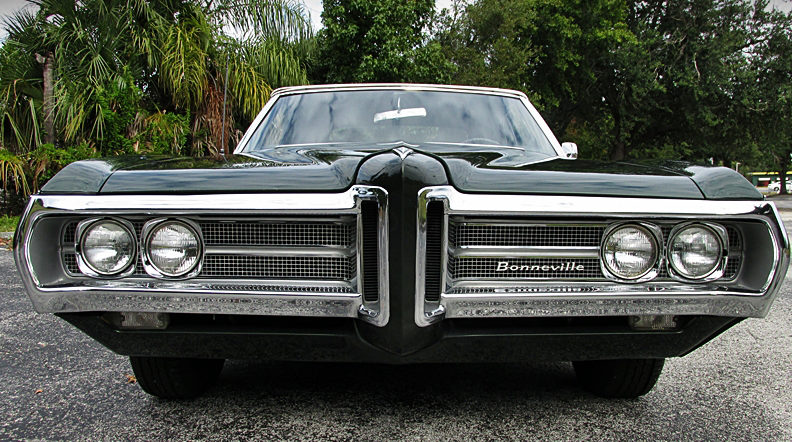
The Pontiac Bonneville could be ordered with a more formal roofline, like the one found on the Grand Prix, but with the more traditional lines of the LeMans. The result is an upscale car without the polarizing nose of the Grand Prix. (That look would come to the Bonneville the following year.) I also love the rear view of the Bonneville, with taillights that almost drape over the rear of the car, as they would a year later with the Thunderbird.
Pretty much everything I mentioned about the Wildcat applies to the Bonneville, as it also rides on GM’s B-body chassis. The difference is that the Bonneville got Pontiac’s potent 390-hp 428-cubic-inch V-8. What’s not to love about this pavement-pounding full-size?
1970 Mercury Marauder
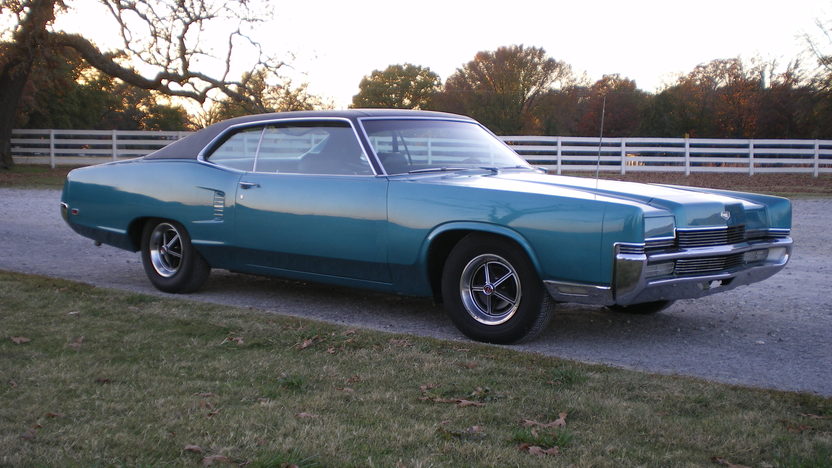
Mercury’s take on the personal luxury coupe for 1970 seemed a bit more forward-thinking than its Ford Thunderbird counterpart. Its squared-off leading edge was more formal and anticipated the look of future American cars, yet it boasted a sporty fastback roofline. The overall package is a perfect amalgam of luxury and sportiness. Bonus points for hidden headlights.
Under the hood was Ford’s familiar 429, again in 360-hp trim. That’s modest power by today’s metrics, but even full-size cars of that era weren’t terribly heavy. Bump the displacement to 460 cubes or more, add a roller cam, massage the cylinder heads a bit, and you’d have all the makings of a sleeper.
1972 Plymouth Gran Fury
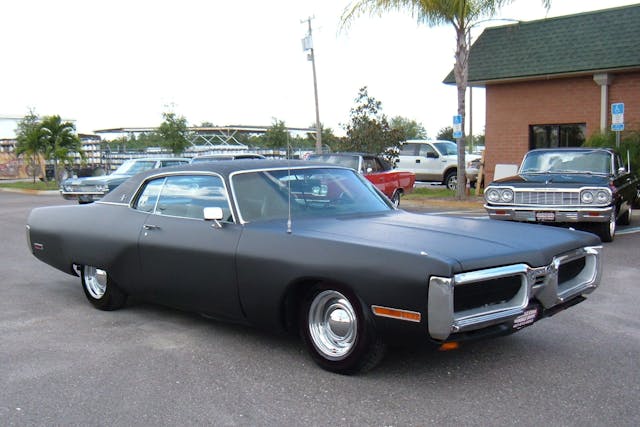
Mopar’s C-bodies adopted “fuselage styling” in 1969. Dozens of unique Plymouth, Dodge, and Chrysler coupes, sedans, and wagons adopted this look, with varying success. Overall, the 1969–73 C-bodies have aged nicely. The Chrysler 300, particularly the 1970 Hurst variant, is a standout. Unfortunately, its 375-hp 440 big-block comes with a premium. They’re rare and pricey.
In contrast, the 1972 Plymouth Gran Fury is a relative bargain. Its massive, full-width chrome bumper was divided into two openings. It looks like it could eat a 1970 Coronet and spit out its slant six in disgust. Not subtle or understated—exactly why the Gran Fury rules.
1968 AMC Ambassador
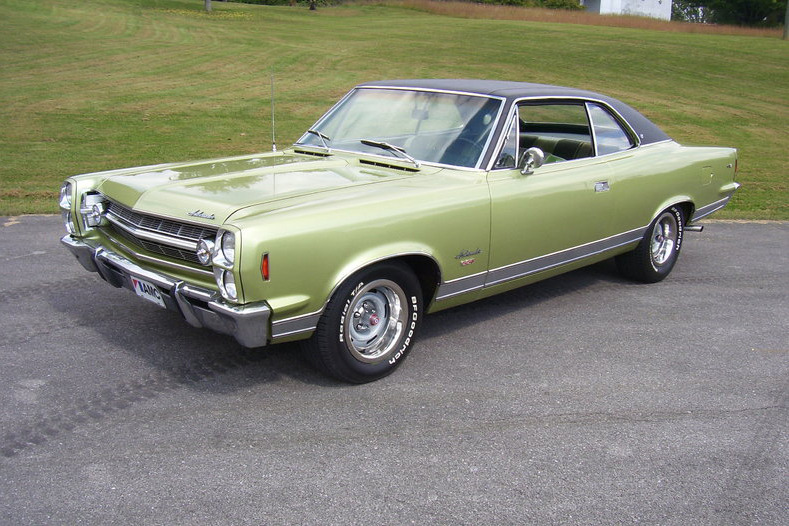
Last but not least, we have the AMC Ambassador. Perhaps the most overlooked full-size on this list, the Ambassador has gorgeous lines and offers up a 390-cubic-inch V-8 engine. I just love the bulges in the fenders and quarter panels that match the bumpers, and the stacked taillights that almost mirror the headlights. The next-generation Ambassador, with its beautiful roofline, deserves an honorable mention, as well. It, too, had 390 power initially, giving way for the 401.
You won’t have trouble rebuilding or hot-rodding an AMC V-8 to keep up with any of the other V-8s on this list, but an Ambassador might prove trickier to restore. It still sounds like a worthwhile endeavor, especially for an AMC loyalist.
***
Check out the Hagerty Media homepage so you don’t miss a single story, or better yet, bookmark it. To get our best stories delivered right to your inbox, subscribe to our newsletters.
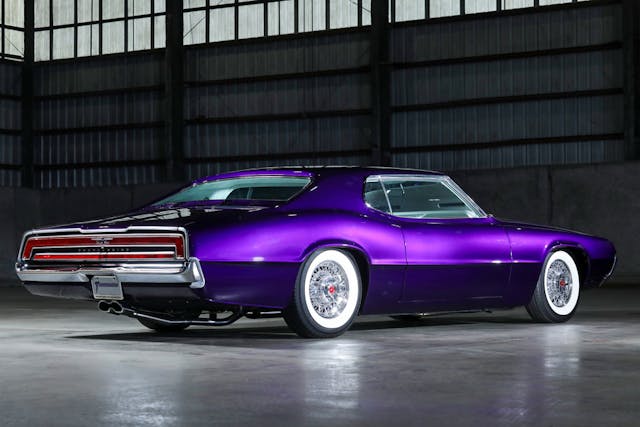


Nice plug for your website.
I had a 1970 T-Bird, painted Candy Apple Red. Nice ride back in the day. Had a quirk though. AC and Power Window relay were the same one, and it only failed when it was an extremely hot day!!
I picked up a 1967 AMC Marlin back in 1973, when I was 16. Completely different style than the 1965-66, much better looking, and very rare, even then. In diehard Rambler fashion, it had an asthmatic six banger under its massive hood. But most of the big AMC had V8s, which were as good as any other at the time.
I like them all but coul do without the Ambassador…
These are OK, but go 2-5 years earlier for better looking choices. “Personal Luxury” coupes look great such as Pontiac Grand Prix, Chevy Monte Carlo, Grand Am (malaise years still came with big engines, though low HP). Don’t forget the ‘more door’ and wagon versions of muscle cars. You can get the HP drive trains and still be able to haul (go fast AND get the kids in). Dodge and Plymouth had some great looking sedans in the late 60’s to about ’73 to go with the 2 door versions. These days, I’ll take anything up to about 1988>>four door, wagon, I don’t care. Anything is better than me-too computerized SUV jelly beans and $80,000 trucks.
my first car a 61 Bonneville convertible 421-4speed tripower leather interior wonderbar radio. 175 bucks in 1965.
Great article on the full size Detroit sleepers. Other readers offered some excellent choices for this era as well. I had a 70 Ford LTD Brougham 2 dr. htp. with a 360 hp 429 and when you could still get 100-105 octane leaded premium I could suprise some drivers out of the stop lights with that car. I had a friend with a 396 Caprice that could do the same. It was when Sonny could be out having fun with his Mach 1 or Z 28 while Dad was showing he still had ‘IT’ with a sporty family size coupe.
In 1962 my dad bought a Buick Wildcat. 401 c.i. and 325 hp. That car was a killer streetlight to streetlight. I was a junior in high school and I managed to blow away most of my senior class in 1963 in that big, bad Buick.
No ’65 Chevy Impala Coupe Big Block w/4-speed? One of the most beautiful shapes to come out of Detroit, imho. Oh, those hips…….
those are a lot more expensive than the other cars mentioned
I’ve had several ’65 SS Impalas over the past 40 years and LOVED the looks. As for the Big Blocks in them, early ’65s had the ‘409″ and later that year you could get the new “396”.
The Mercury Marauder was also available in 1969, I believe. There may also have been a low(er)-production “GT” version if memory serves.
Just checked, the Marauder upgrade was called the “X-100,” not the “GT.”
I’ve always had a passion for American full-size and luxo cars with the biggest engines.
My first car was a used ‘69 Grand Prix Model J (400/auto.)
Later in life I bought a same-color ‘69 GP SJ with 428 H.O. and Hurst-shifter 4-speed. Wow…and I’d thought the 400 was a performer!
Also have owned:
‘64 Grand Prix (389 with aftermarket dual fours).
‘66 Riviera GS (425 with factory dual fours).
‘70 Chrysler 300 Hurst 440/375hp).
And a ‘70 Eldorado (500 cube/400hp) in addition to six 1960s Cadillacs.
All were quicker than people thought, and rode well too. And, those old Freon A/C units would spit ice cubes.
Perfect cars for when I lived in Texas. Lots of long, straight roads to run at 90+ mph on the way to a steak dinner 50 miles away. Great times.
I wonder who did the exhaust work on the purple T-Bird–top picture? Remind me to never use them for one of my cars.
not to be nitpicky, but the mid-late 60’s AMC ambassadors were comparable in size to the big 3’s mid size lines, with overall length ~202″ on a 118″ wheelbase, a foot to 18″ shorter than the other cars mentioned….
BOATS!
I’ll take one Ambassador, please!